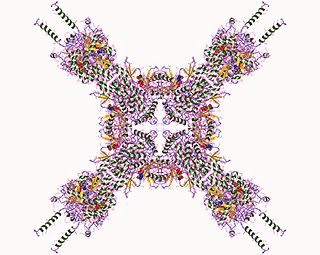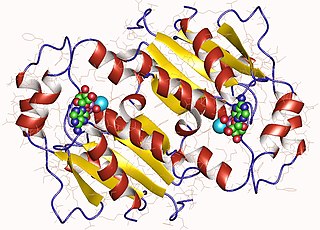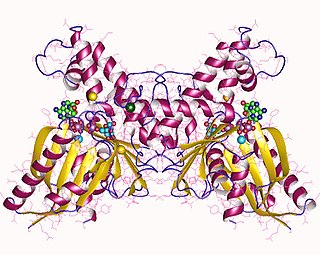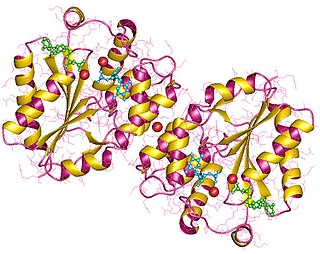| hydroxyethylthiazole kinase | |||||||||
|---|---|---|---|---|---|---|---|---|---|
| Identifiers | |||||||||
| EC no. | 2.7.1.50 | ||||||||
| CAS no. | 9026-56-6 | ||||||||
| Databases | |||||||||
| IntEnz | IntEnz view | ||||||||
| BRENDA | BRENDA entry | ||||||||
| ExPASy | NiceZyme view | ||||||||
| KEGG | KEGG entry | ||||||||
| MetaCyc | metabolic pathway | ||||||||
| PRIAM | profile | ||||||||
| PDB structures | RCSB PDB PDBe PDBsum | ||||||||
| Gene Ontology | AmiGO / QuickGO | ||||||||
| |||||||||
| Hydroxyethylthiazole kinase family | |||||||||
|---|---|---|---|---|---|---|---|---|---|
 crystal structure of native thiazole kinase in the monoclinic form | |||||||||
| Identifiers | |||||||||
| Symbol | HK | ||||||||
| Pfam | PF02110 | ||||||||
| Pfam clan | CL0118 | ||||||||
| InterPro | IPR000417 | ||||||||
| SCOP2 | 1c3q / SCOPe / SUPFAM | ||||||||
| |||||||||
In enzymology, a hydroxyethylthiazole kinase (EC 2.7.1.50) is an enzyme that catalyzes the chemical reaction
Contents
- ATP + 4-methyl-5-(2-hydroxyethyl)thiazole ADP + 4-methyl-5-(2-phosphonooxyethyl)thiazole
Thus, the two substrates of this enzyme are ATP and 4-methyl-5-(2-hydroxyethyl)thiazole, whereas its two products are ADP and 4-methyl-5-(2-phosphonooxyethyl)thiazole.
This enzyme belongs to the family of transferases, specifically those transferring phosphorus-containing groups (phosphotransferases) with an alcohol group as acceptor. The systematic name of this enzyme class is ATP:4-methyl-5-(2-hydroxyethyl)thiazole 2-phosphotransferase. Other names in common use include hydroxyethylthiazole kinase (phosphorylating), and 4-methyl-5-(beta-hydroxyethyl)thiazole kinase. This enzyme participates in thiamine metabolism. Thiamine pyrophosphate (TPP), a required cofactor for many enzymes in the cell, is synthesised de novo in Salmonella typhimurium . [1]
In Saccharomyces cerevisiae , hydroxyethylthiazole kinase expression is regulated at the mRNA level by intracellular thiamin pyrophosphate. [2]








